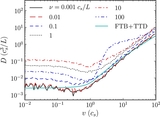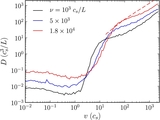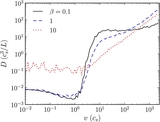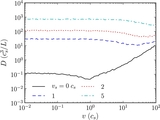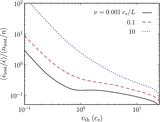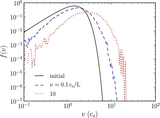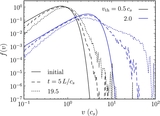Image Details
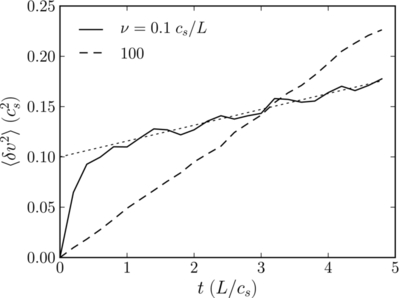
Caption: Figure 2.
Dispersion in velocity, measured relative to the fluid frame, as a function of time for test particles that were initially
delta functions with
v
i
![]() 0.025
c
s
. The turbulence has properties given by Table 1. For the low-scattering run there is an initial "jump" in velocity dispersion
caused by the changing local parallel fluid velocity relative to the particles, after which
0.025
c
s
. The turbulence has properties given by Table 1. For the low-scattering run there is an initial "jump" in velocity dispersion
caused by the changing local parallel fluid velocity relative to the particles, after which
![]() δ
v
2
δ
v
2
![]() (
t) increases linearly, consistent with diffusion. The high-scattering run has no such jump because the particles remain tied
to the local fluid frame by the rapid scattering. The dotted curve shows the fit we use to calculate diffusion coefficients
in the case with the initial jump.
(
t) increases linearly, consistent with diffusion. The high-scattering run has no such jump because the particles remain tied
to the local fluid frame by the rapid scattering. The dotted curve shows the fit we use to calculate diffusion coefficients
in the case with the initial jump.
Copyright and Terms & Conditions
© 2013. The American Astronomical Society. All rights reserved.



